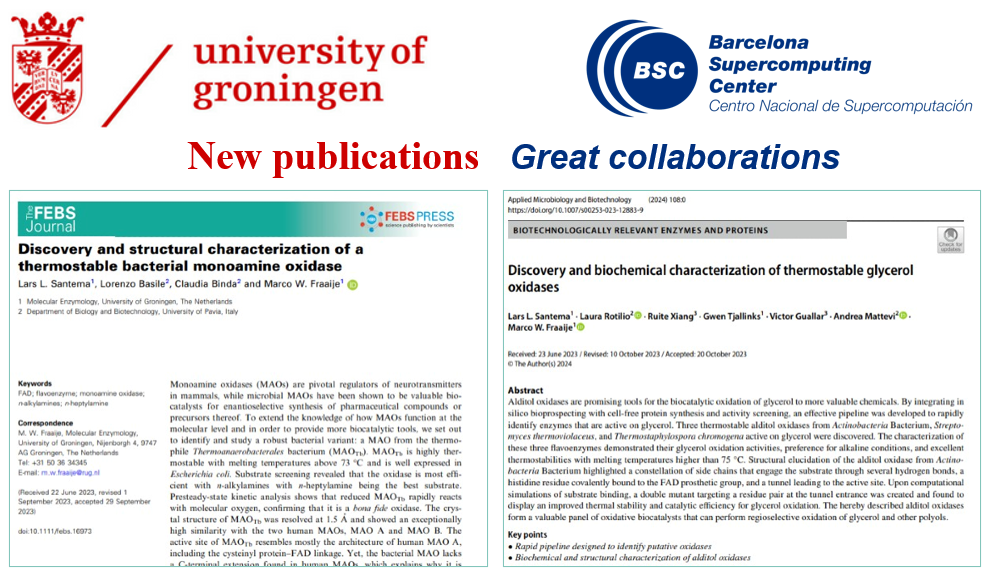Researchers led by Prof. Marco Fraaije at the University of Groningen (RUG) have just published two papers describing the discovery and characterisation of two thermostable oxidases. The first of these was also in collaboration with Barcelona Super Computing Centre, led by Victor Guallar.
Prof. Fraaije summarises these findings:
Discovery and biochemical characterization of thermostable glycerol oxidases
Lars L. Santema; Laura Rotilio; Ruite Xiang; Gwen Tjallinks; Victor Guallar; Andrea Mattevi; Marco W. Fraaije
New glycerol oxidases – Biorefinery activities result in the production of glycerol as side product. Therefore, it is important to develop glycerol-based products or applications. One way to valourize this biobased compound is by selective oxidation. In this study we have discovered several new and robust glycerol oxidases that are effective in oxidizing glycerol. Using a computational and structural analyses, we have also been able to improve their catalytic properties. Summarizing: this paper reports on newly engineered and discovered glycerol oxidases are thermostable and highly active on this renewable compound.
Discovery and structural characterization of a thermostable bacterial monoamine oxidase
Lars L. Santema, Lorenzo Basile, Claudia Binda, Marco W. Fraaije
A bacterial monoamine oxidase – Amines serve various roles in nature. For the degradation or recycling of biological amines, oxidase are typically involved. Two well-known monoamine oxidases (MAOs) are the human MAO-A and MAOB. These two oxidases are crucial for proper neurological functioning, being involved in metabolism of neurotransmitters. Yet, these two enzymes are membrane-bound and, as a consequence, difficult to study in vitro. We have discovered a MAO from a bacterium that is very similar to the human MAOs but that lacks a membrane anchor. This MAO is easy to produce, is highly stable, and shows activity on various amines. Its crystal structure was elucidated, revealing that also the active site is very similar to those of the human MAO. This makes this bacterial enzyme an interesting enzyme to be used for exploring pharma compounds, while it can also be engineered towards biocatalytic applications.
This discovery was highlighted by the Febs Journal in its commentary here.
For more of our research papers and scientific output, visit the Output page on our website, or go to our Zenodo Community.
